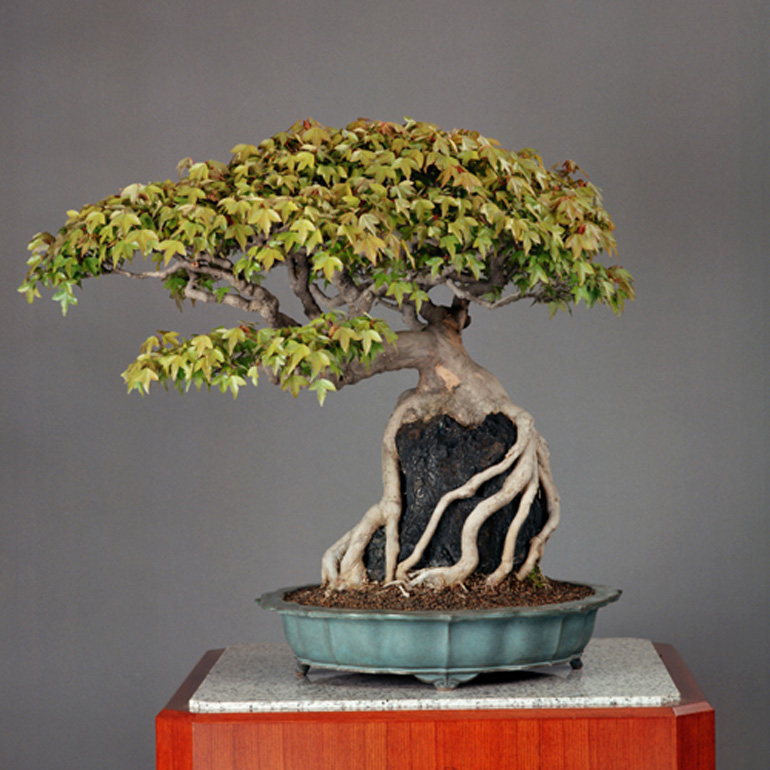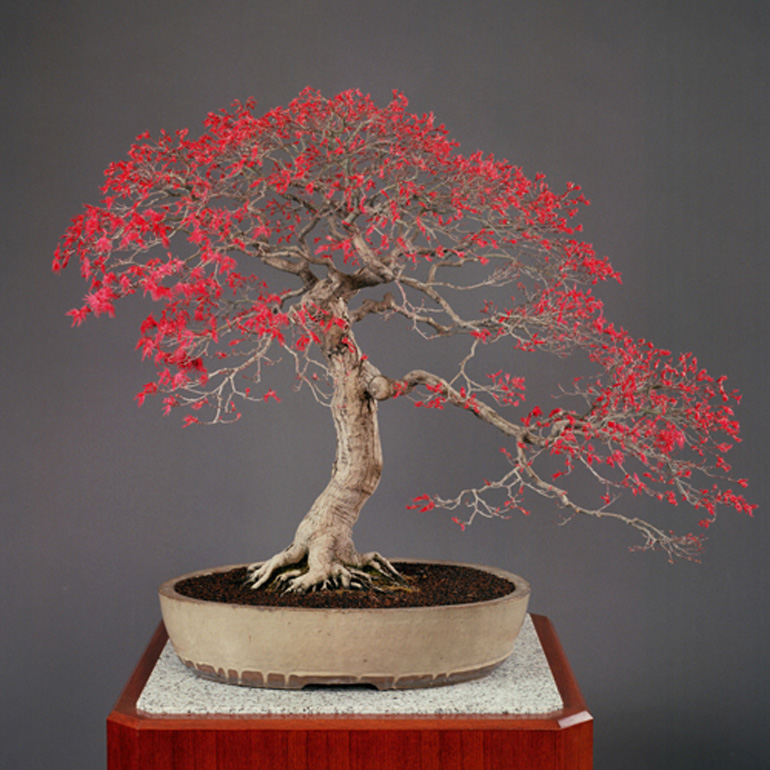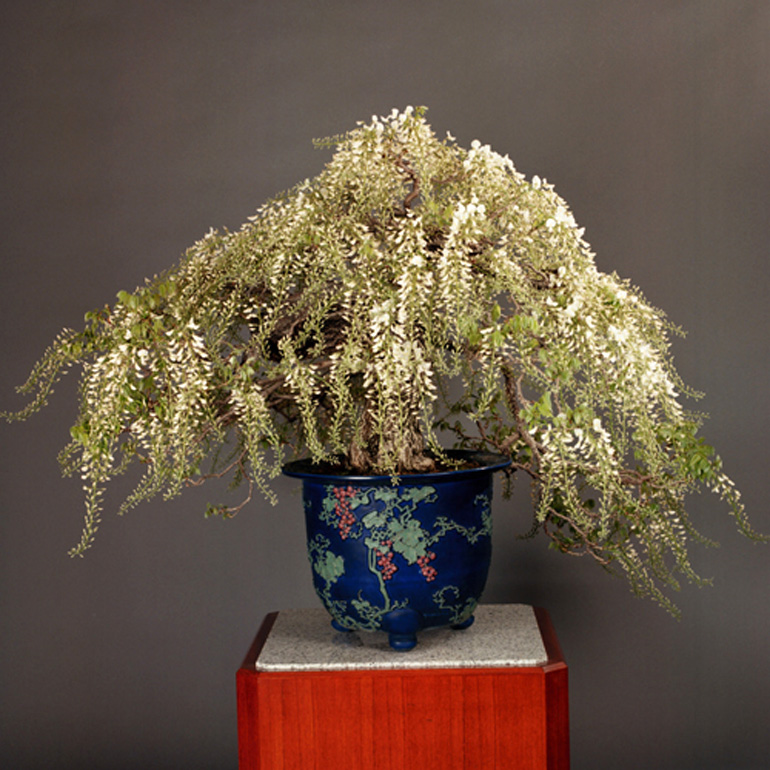
At least two things set this Root-over-rock Trident maple (Kaede Ishitsuki - maple planted on a rock) apart from thousands of other root-over Trident maples on this planet. First there it's exceptional quality, and second, it's part of Japan's Imperial Bonsai Collection. The tree's age is about 90 years. Its height is 57 cm (22.5"). Here's a quote from the Imperial website... "Among 'zoki' deciduous trees, 'momiji' (Japanese maple) and "kaede" (maple) (I'm not sure why this isn't translated as Trident maple) are particular favorites of bonsai lovers because of the way they show off the four seasons. Aficionados appreciate the young buds in early spring, the fresh green leaves in May, the red foliage in autumn, and the bare trunk and branches in winter. Kaede does not turn as red in fall as momiji does, but its autumn leaves -- a mixture of yellow and red hues -- are equally prized. "At the Imperial Palace, this kaede tree has been transplanted almost every year according to the condition of its roots. Due to its beautiful appearance, it is used for ornamental purposes throughout the year."
Yesterday we featured a tree that was donated to the U.S. National Bonsai and Penjing Museum by The Imperial Household of Japan. Going to the source today, here’s are some more from the Imperial Collection. Only this time, they’re ones that are still there.
–
"Bright reddish leaves cover a 'De-Shojo momiji (Acer palmatum 'De-Shojo') in the budding season in April, as shown in a photo. Most of those leaves turn green in summer, but some remain red. They turn red again in autumn before the tree loses leaves toward winter. " From the Imperial Bonsai website. The tree is about 50 years old. Its height is 95cm (37.5"). If you'd like to dig in further, there's more on this tree and the others shown here at the Imperial site

Another momiji (Japanese maple). This one is a Seigen (Acer palmatum 'Seigen'). It's age is about 100 and its height is 74cm (29"). Here's teaser from the Imperial site... "Red leaves bloom from the tree in April. The color is not as vivid as hues found in the leaves of "deshojo," another momiji species (above), but it is a cherished spring color. "The tree features radial "nebari" (surface roots) and dynamic "tachiagari" (the initial rise of the trunk) that help balance the shape of the whole tree. Its "mikihada" trunk surface gives a sense of old age and represents an ideal momiji bonsai work. Given that its leaves grow strongly in summer, the tree was planted in a relatively large vessel. This makes viewers think of a tree growing from Mother Earth." There's more on this tree here

This Fuji Japanese wisteria (Wisteria floribunda Fuji) is about 450 years old! It's height is 83 cm (almost 33"). This time we'll show you the entire quote from the Imperial site...."The tree age is astonishing. Despite the great age, this tree continues to bloom flowers powerfully every year without showing any signs of weakening. "The viewing season falls in late April. But this year, the Fuji tree sent out flowers a bit earlier than usual. The Fuji was in full bloom in mid-April with its long bunches hanging down. "After the flower season is over, what appears to be a dent which looks like a hole comes to be seen in the lower part of its trunk. But it is not a hollow hole, but a work of natural formation that has grown into something like a dent over a long period of time. "Despite the large size of the tree, it is planted in a relatively small pot. The vessel is overcrowded with tree roots. So, the Fuji tree is transplanted once in every two years with the roots being unstiffened (untangled?). This is considered to be a species of the original Fuji, or the so-called yamafuji (silky wisteria), that had not been modified."

